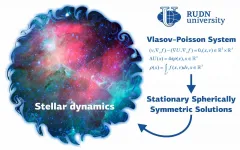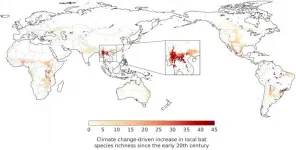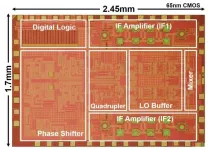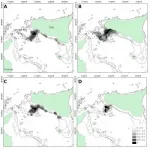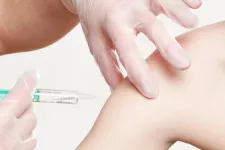(Press-News.org) The spinal column consists of 24 vertebrae that provide axial support to the torso and protection to the spinal cord that runs through its central cavity. The vertebrae are connected by means of intervertebral discs. These discs are highly hydrated, flexible and highly mechanically resistant. They allow the column its flexibility and act as shock absorbers during daily activities such as walking, running and in impact situations, such as jumping.
These unique features are made possible by the discs' tissue composition and structure. At its centre, there is a gel-like substance called nucleus pulposus (NP). This is surrounded by a fibrocartilage, the annulus fibrosus (AF), that laterally confines NP and enables high fluid pressure within, thus stabilizing the disc mechanically, like an inflated tyre. Upwards and downwards of the NP, are thin layers of cartilage (cartilage endplates, CEP), which separate the NP and the inner part of the AF of the vertebral bone (Fig 1). These layers of cartilage regulate the exchange of water and important biomolecules between the vertebrae and the NP, thus contributing to both the mechanics and the functional biological regulation of the disc.
A recent study published in the journal Bioinformatics presents a model to study the intervertebral disc resorting to experimental knowledge, and for the first time, network modelling solutions in systems biology, to mimic the cellular behaviour of NP cells exposed to a 3D multifactorial biochemical environment. This research has been carried out by members of the BCN MedTech Research Unit, a centre attached to the UPF Department of Information and Communication Technologies (DTIC), with Laura Baumgartner, a UPF PhD student as first author of the article, under the guidance of Jérôme Noailly, co-author of the study.
In-silico modelling to study intervertebral disc degeneration
Intervertebral disc degeneration is defined by a progressive loss of water and structure, and consequently of functionality. It differs from the natural ageing of the disc by the early onset of its symptoms, which has serious effects on the workforce. It is a major risk factor for chronic lower back pain, which can in turn cause disability.
The progressive degradation of the disc consists of accumulations of microscopic lesions, most likely caused by a (prolonged) alteration of the activity of local cells, which are essential to preserve tissue integrity. The factors leading to the change in this cell activity are not fully known and seem to be caused by interactions of multiple mechanical and biochemical stimuli, which limits in vivo or in vitro exploration. This lack of knowledge means that treatments for debilitating lower back pain are not able to solve the root problem, and so focus mainly on pain control with highly variable and short-term effectiveness.
In-silico modelling is particularly attractive because it allows integrating the influence of different stimuli on cells of the nucleus pulposus exposed to a 3D multifactorial environment. It also offers the chance to test a large number of possible scenarios of degeneration that might explain the great variability of clinical cases, which would be impossible by performing experiments.
As Laura Baumgartner explains in greater detail, "The in-silico modelling used in this study was the agent-based model, simulating a volume of 1mm³ with 4000 cells of the nucleus pulposus as agents. Cellular activity in the nucleus pulposus was estimated through the expression of messenger RNA of various components of the tissue that may be affected in the event of intervertebral degeneration: central proteoglycan proteins that form aggrecan aggregates and type I, II and III collagen, and two proteases that degrade the tissue, the enzyme stromelysin-1 (MMP-3) and ADAMTS, with a particular affinity for aggrecans". The values were obtained for inflamed and non-inflamed cells. In addition, cell viability was estimated by means of different biochemical profiles. The regulation of this cellular activity will determine the evolution of the composition of the disc tissues and their ability to maintain their integrity, retain water and fully undertake their role.
This advanced modelling, the first results of which have been validated, offers for the first time the possibility of predicting risk factors such as metabolic problems that can affect the nutrition of the intervertebral disc cells, deregulation problems of the inflammatory system that can lead to its over-activity, or morphological or mechanical risk factors, among others.
The study spawns a new horizon in the exploration of the intervertebral disc and its translation to better managing a large number of back pain problems. This potential will be explored in great depth in the new European project Disc4All (H2020-MSCA-ITN-ETN-2020 GA: 955.735), coordinated by Jérôme Noailly, which began in late 2020 and in which 15 theses are to be conducted focusing on the integrated description of disc degeneration mechanisms and on the exploitation of these descriptions to stratify patients with the ultimate goal of finding new therapeutic targets.
Advancing the knowledge of intervertebral disc regeneration
A later work published in January this year by the same authors in the International Journal of Molecular Sciences with international participants, presents an extensive review of previous work on the pathophysiology and advanced strategies of intervertebral disc regeneration. It provides an integrating analysis of the current knowledge of the multiscale function and the regulation of the intervertebral disc in health and disease, the potential regenerative strategies, and in-silico models that might provide support for the development of advanced therapies.
INFORMATION:
At the time of writing, coronavirus disease 2019 (COVID-19) is seriously threatening human lives and health throughout the world. Before effective vaccines and specific drugs are developed, non-pharmacological interventions and numerical model predictions are essential. To this end, a group led by Professor Jianping Huang from Lanzhou University, China, developed the Global Prediction System of the COVID-19 Pandemic (GPCP).
Jianping Huang is a Professor in the College of Atmospheric Sciences and a Director of the Collaborative Innovation Center for Western Ecological Safety, Lanzhou University, China. He has for a long time been dedicated to studying ...
The Vlasov-Poisson equations describe many important physical phenomena such as the distribution of gravitating particles in the interstellar space, high-temperature plasma kinetics, and the Landau damping effect. A joint team of scientists from the Mathematical Institute of RUDN University and the Mathematical Institute of the University of Munich suggested a new method to obtain stationary solutions for a system of Vlasov-Poisson equations in a three-dimensional case. The obtained solutions describe the phenomena of stellar dynamics. The results of the study were published in the ...
Global greenhouse gas emissions over the last century have made southern China a hotspot for bat-borne coronaviruses, by driving growth of forest habitat favoured by bats.
A new study published today in the journal Science of the Total Environment provides the first evidence of a mechanism by which climate change could have played a direct role in the emergence of SARS-CoV-2, the virus that caused the COVID-19 pandemic.
The study has revealed large-scale changes in the type of vegetation in the southern Chinese Yunnan province, and adjacent regions in Myanmar and Laos, over the last century. Climatic changes ...
Neanderthals' gut microbiota already included some beneficial micro-organisms that are also found in our own intestine. An international research group led by the University of Bologna achieved this result by extracting and analysing ancient DNA from 50,000-year-old faecal sediments sampled at the archaeological site of El Salt, near Alicante (Spain).
Published in Communication Biology, their paper puts forward the hypothesis of the existence of ancestral components of human microbiota that have been living in the human gastrointestinal tract since before the separation between the Homo Sapiens and Neanderthals that occurred more than 700,000 years ago.
"These results allow us to understand which components of the human gut microbiota ...
New research has identified a nanostructure that improves the anode in lithium-ion batteries
Instead of using graphite for the anode, the researchers turned to silicon: a material that stores more charge but is susceptible to fracturing
The team made the silicon anode by depositing silicon atoms on top of metallic nanoparticles
The resulting nanostructure formed arches, increasing the strength and structural integrity of the anode
Electrochemical tests showed the lithium-ion batteries with the improved silicon anodes had a higher charge capacity and longer lifespan
New research conducted by the Okinawa Institute of Science and Technology ...
USC researchers have developed a new method to counter emergent mutations of the coronavirus and hasten vaccine development to stop the pathogen responsible for killing thousands of people and ruining the economy.
Using artificial intelligence (AI), the research team at the USC Viterbi School of Engineering developed a method to speed the analysis of vaccines and zero in on the best potential preventive medical therapy.
The method is easily adaptable to analyze potential mutations of the virus, ensuring the best possible vaccines are quickly identified -- solutions that give ...
The early prognosis of high-risk older adults for amnestic mild cognitive impairment (aMCI), using noninvasive and sensitive neuromarkers, is key for early prevention of Alzheimer's disease. A recent study, published in the Journal of Alzheimer's Disease, by researchers at the University of Kentucky establishes what they believe is a new way to predict the risk years before a clinical diagnosis. Their work shows that direct measures of brain signatures during mental activity are more sensitive and accurate predictors of memory decline than current standard behavioral testing.
"Many studies have measured electrophysiological rhythms during resting and sleep ...
Scientists at Tokyo Institute of Technology (Tokyo Tech) and NTT Corporation (NTT) develop a novel CMOS-based transceiver for wireless communications at the 300 GHz band, enabling future beyond-5G applications. Their design addresses the challenges of operating CMOS technology at its practical limit and represents the first wideband CMOS phased-array system to operate at such elevated frequencies.
Communication at higher frequencies is a perpetually sought-after goal in electronics because of the greater data rates that would be possible and to take advantage of underutilized ...
A new study in Frontiers in Marine Science provides a first-of-its-kind evaluation of which regions of southern European seas are in the most need of fishing restrictions. These areas have persistently shown high numbers of undersized fish and crustaceans, which are typically discarded because they are below the allowable size limit for collection. These findings may offer a strategy for prioritizing conservation efforts and ensuring more sustainable fishery management in the future.
"Natural fish populations need time to reproduce and recover from fishing impacts -- this is the only way to achieve a balance between natural resources and human exploitation," says lead author Dr Giacomo Milisenda, of the Stazione Zoologica Anton Dohrn di Napoli in ...
Multidisciplinary team of international experts suggests participants should receive a "substantial" amount, be paid ethically
Healthy people volunteering to be infected with SARS-CoV-2, in order to help scientists better understand how to tackle the virus, should receive payment - if it is determined that these studies are otherwise ethical to proceed.
Those are the findings of a new peer-reviewed study published in the American Journal of Bioethics, which has assessed the ethics of paying participants to take part in so-called 'Human Infection Challenge Studies' (HICS).
Over ...

